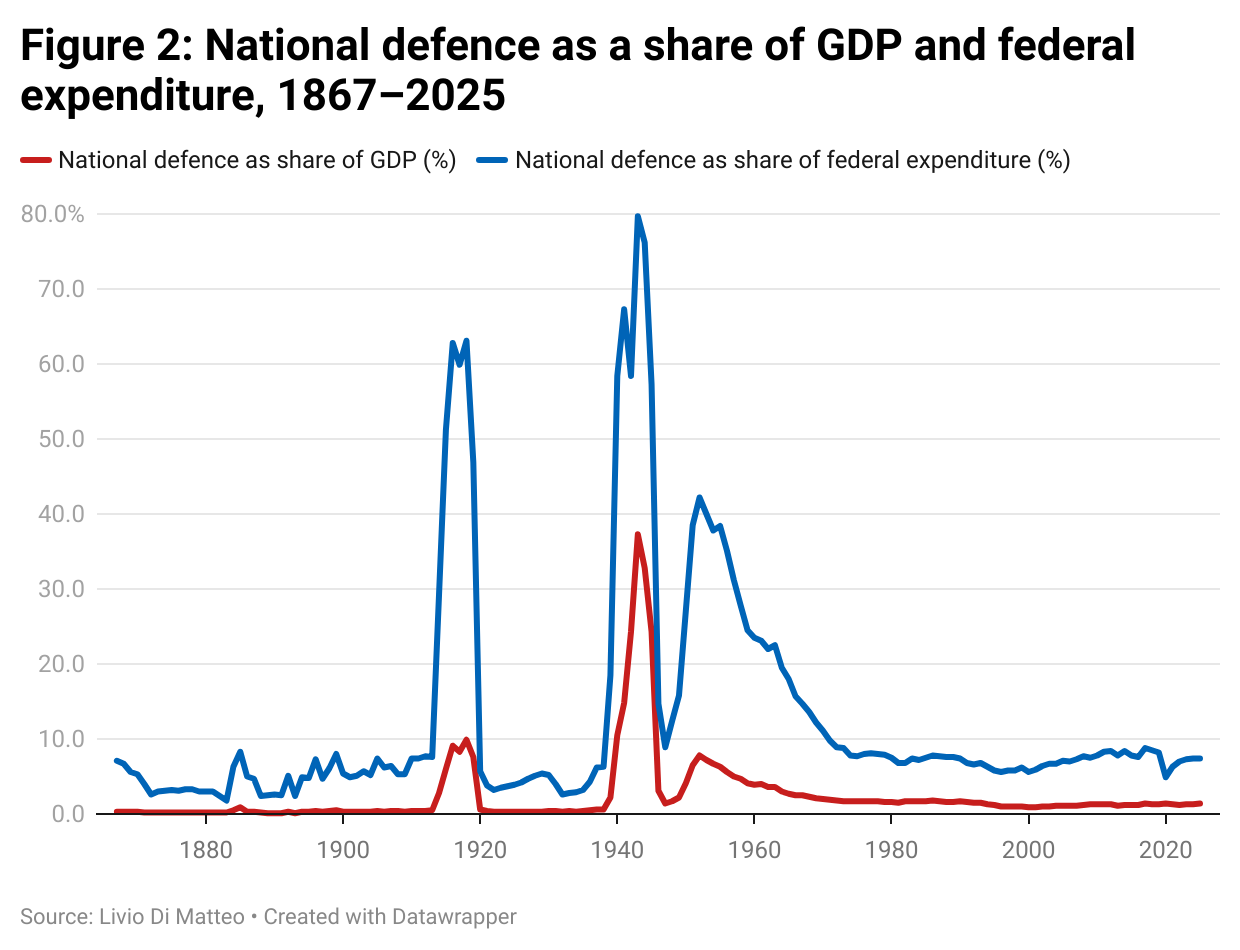Since the election rhetoric of our old relationships being dead and a new global age being upon us, the Carney government has moved to bring about national infrastructure and defence expenditure projects, which will rapidly ramp up the size of the federal government.
These expenditures, the government says, are designed not only to meet our new and higher defence spending commitment of 5 percent of GDP to NATO, but also to secure Canada’s economic future in the face of new challenges from the United States, China, India, and the world.
Despite calls for the Canadian government to pursue market alternatives to the United States, the ongoing trade negotiations with the Trump administration suggest the outcome may be a tomorrow that resembles the past. What will be new are the ample opportunities for theatrical declarations of trade victory by the current occupant of the White House.
Unresolved is the extent to which Canada will remain intertwined with the United States in terms of defence and economics, or whether we will chart a more sovereign path going forward.
Canada’s new national policy marks a return to the past
The latter has been described in several ways: enhanced economic resilience, increased economic sovereignty, or, as one analyst suggested, sovereign reconstruction. But none of these terms adequately describes the path the federal government has set for itself. Building “resilience” for a small open economy in a world of chaotic random shocks rather than stable and predictable relationships will be a laborious and uncertain work in progress.
Increasing “economic sovereignty” suggests autarky, which, in and of itself, has never generated gains equivalent to those of deeper trade relationships based on mutual gain.
As for “sovereign reconstruction,” it implies that the past has been a period of sovereign deconstruction in economic, political, and cultural terms. We simply don’t have the luxury of devoting national energy to this discourse.
The best term that describes current federal policy is one from the past—”national policy”—to reflect a mix of policies that grow Canada’s economy and apply economic and political power. This seems like a job for the federal government, given that under our constitution, Ottawa is responsible for the national economic space, as well as peace, order, and good government.
Canada’s national policy in the 19th century focused on domestic land, settlement, and transportation initiatives, as well as international trade policy. It used a combination of railway investment, favourable land settlement policies, and high tariffs to boost Canada’s population, industrial capacity, and domestic economic activity. Similarly, today’s national policy would involve the federal government undertaking both domestic and international activities.
Domestically, the federal government would try to enhance the internal economic union and invest in building national infrastructure projects, including supportive defence infrastructure. Defence spending on military hardware aims to enhance Canada’s role internationally. Maintaining old and forging new trade relationships will also serve to project Canada’s role internationally.
Past experiences with national policy have tended to be marked by increases in the size of the federal government relative to GDP—the federal fiscal footprint. Indeed, Figure 1 plots the federal expenditure-to-GDP ratio from 1867 to the present and the future.

There are periods of spending spikes followed by quick declines at several points—the early 1880s (CPR project), the First World War, the onset of the Great Depression, the Second World War, the Korean War, and the COVID-19 pandemic. But the period of steady increase from the end of the 1950s to the mid-1990s is different—it is the era when Canada lost its way when it came to federal public finances, as deficit and debt-soaked spending ramped up like a runaway freight train during an era of stagflation. It culminated in the federal fiscal crisis.
Any increase in federal spending relative to the size of the economy raises the key questions of how much and how it will be paid for? “How to pay for it” is relatively easy to figure out: raise taxes, reduce spending in non-national projection significant categories, or run a deficit, adding to the national debt, or some combination thereof. “How much” is more problematic, and in the absence of a federal budget, one can only speculate as to how much larger fiscal outlays may be in the coming years.
Figure 1 also projects the federal fiscal footprint going forward to 2035, under several simple growth scenarios. Key to these scenarios is the defence expenditure-to-GDP ratio rising from 1.4 percent in 2025 to 3.5 percent in 2035.
Why 3.5 percent and not 5 percent? It is because the hard defence spending target on personnel and equipment is 3.5 percent, whereas the additional 1.5 percent includes defence-related spending such as ports, transport, and even critical minerals. The latter will likely be pursued no matter what.

All three scenarios assume the increase in the defence spending to GDP ratio is spread evenly from 2025 to 2035, and nominal GDP grows at 4 percent annually. The defence expenditure-to-GDP ratio increase is averaged over the 10 years and applied to nominal GDP to estimate defence spending each year. The remaining program expenditure is assumed to grow at 6 percent annually under Scenario 1, 8 percent under Scenario 2, and 4 percent under Scenario 3.
Finally, debt service charges are assumed to grow at 3 percent annually in Scenario 1 (the annual average growth from 2005 to 2025), 9 percent in Scenario 2 (the average growth rate from 2015 to 2025) and 8 percent in Scenario 3.
As the results show, from 17.5 percent in 2025, by 2035, the federal footprint could reach 20 percent under Scenario 1, 27 percent under Scenario 2, and 21 percent under Scenario 3.
Total federal spending by 2035 would approach $1.3 trillion in Scenario 2 and just under $1 trillion in the other two scenarios. In addition, by 2035, defence spending could account for 18 percent of federal spending under Scenario 1, 13 percent under Scenario 2 and 17 percent under Scenario 3—shares not seen since the 1960s.
What’s the point of all this? The federal footprint is growing. It’s just a question of by how much. That could be debated until the elbows come down (if they ever do). The worst-case result here shows Ottawa returning to COVID-19-era sizes. The other scenarios show results akin to the size of the federal government in the early to mid-1990s.
One can, of course, simply dismiss these numbers as the prognostications of yet another economist. However, one cannot dismiss the reality that a new era of national policies will undoubtedly come with higher federal spending and a larger federal government.










